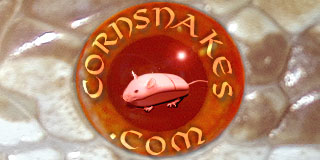HerpsOfNM
My name's Blurryface...
Jen, take my breeding last year of Peppermint Stripe x Tessera. The tessera was sold as heterozygous amel, heterozygous stripe. Well, I got ZERO amels, and a bunch of babies that I was like, WTF is that??? Oh- motley. I never hatched a motley beforeSo out of those however many motleys, statistically, 50% should also be tessera. There were also quite definite tesseras. I wonder if I posted the pics...
Here's the thread. Keep in mind that as these hatched, I didn't now that the female was NOT heterozygous stripe or amel. I'm going to have to go read it and see how much of a dumb-ass I was...
edit: not too bad! So- there are tesseras, normals, and motleys. Statistically, some of those motleys should be tesseras. Doesn't mean they are! I have no idea where they are now. Carol had them all, and most likely they were sold overseas.
I've venture this little corn worm might be tessera....
http://www.cornsnakes.com/forums/showpost.php?p=1591968&postcount=18
I'm keying in on the "chevy" logo side blotches for that assumption.
